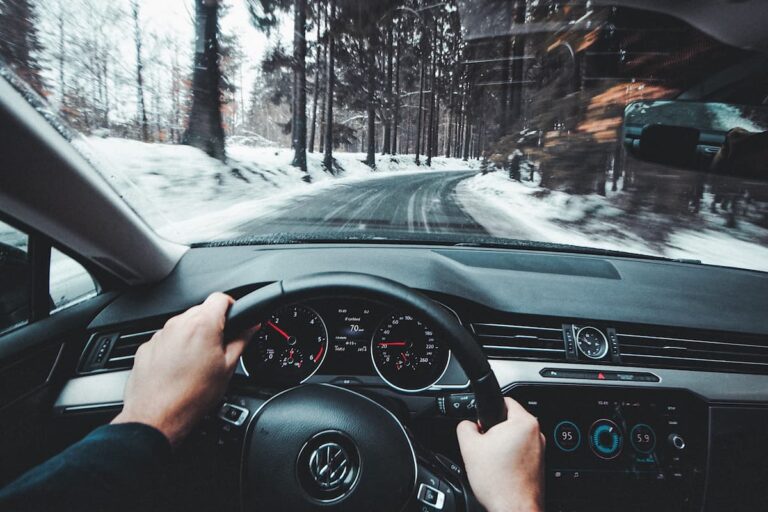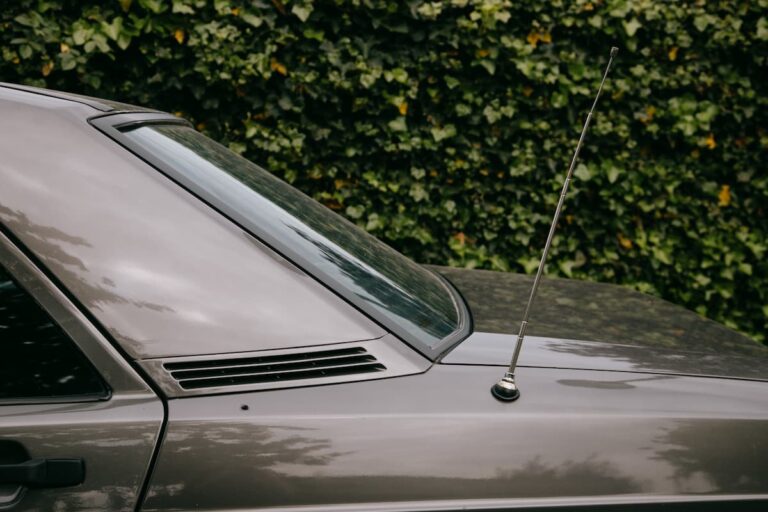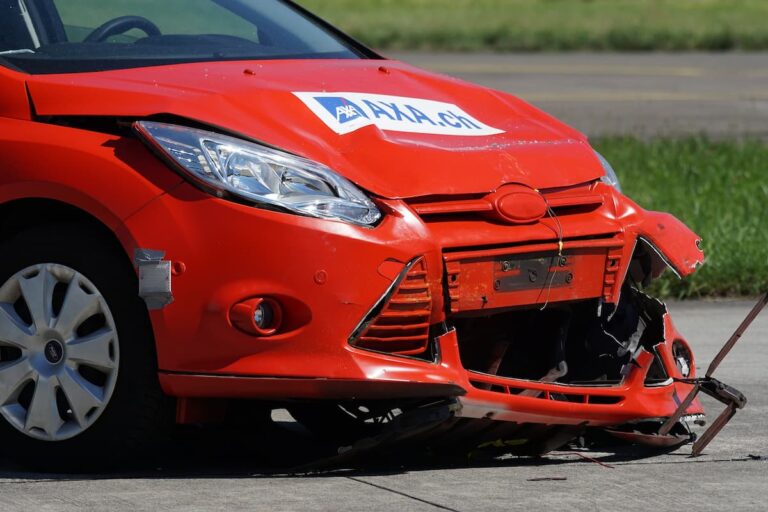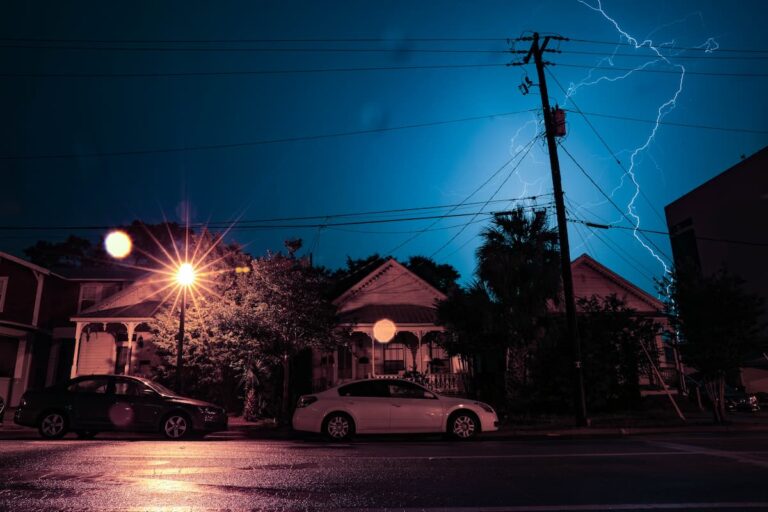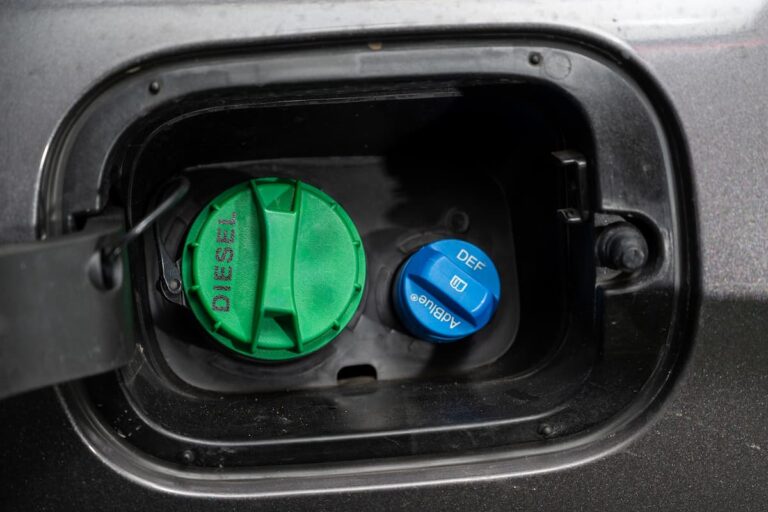Why Won’t Cars Start After Driving Through Water?
It’s impossible to avoid every bit of water on the road after it rains.
Unfortunately, the internal parts of cars aren’t designed to get wet.
If you hit a large puddle, your car can stall and stop and not turn over again.
Your car may not start after driving through water if the electrical wires have shorted out, the ignition has gotten wet, or your engine has taken in water. Each issue has different fixes and will cost different amounts to take care of.
Why Driving Through Water Is A Bad Idea
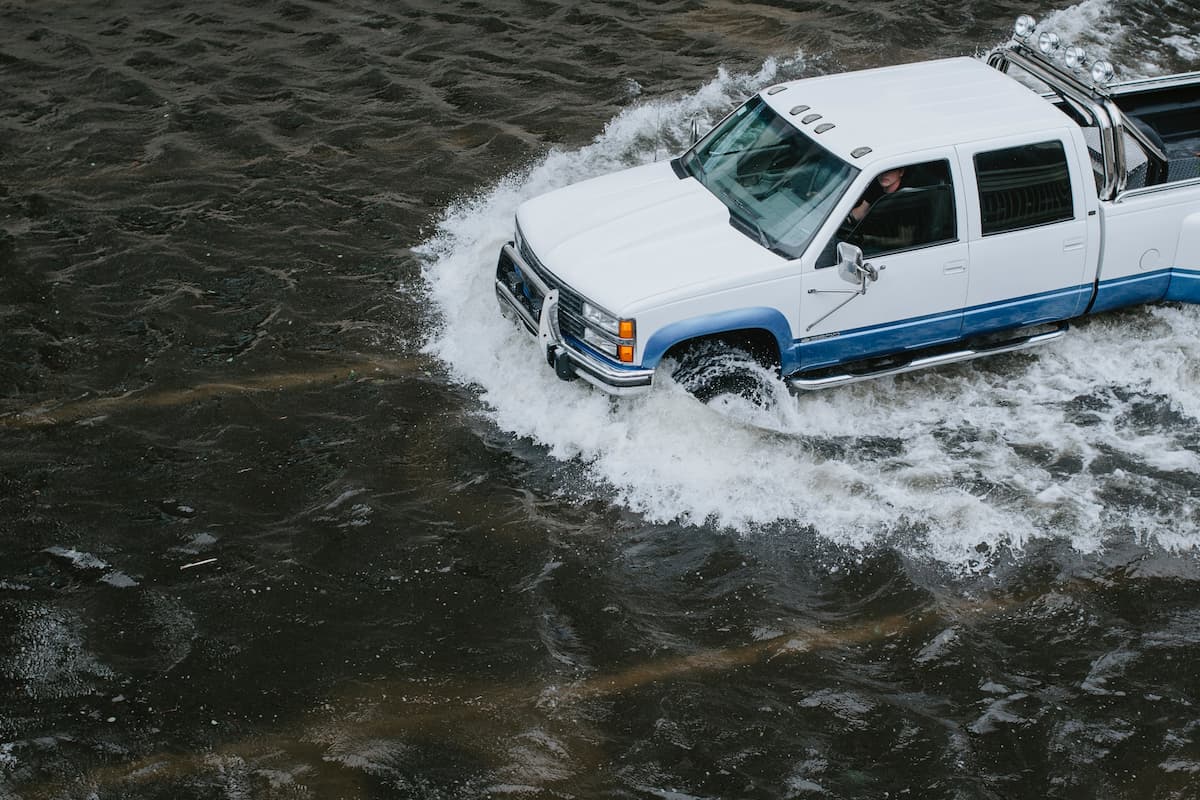
Generally, you should be fine driving through puddles or water only a couple of inches deep.
Your car is made to withstand some wetness, and as long as the front end of your vehicle stays mainly dry, you shouldn’t have any problems.
Modern vehicles have plenty of waterproofing to protect against splashes and rain since they’re meant to be outdoors. If you drive a car that sits higher off the ground, such as a truck or an SUV, you are also less likely to have serious problems when going through a little water.
However, you should never drive through any water you don’t know the depth of as you may get trapped.
Standing water can look shallow, but it may be deeper than you anticipate, and you can’t be sure if the road is damaged underneath it.
Flooded roads are also incredibly dangerous as moving water currents can easily sweep you and your vehicle away.
Also importantly, even though your car can get a little wet, its internal mechanisms are not completely waterproof, and if you drive through a large amount of water, it may turn off or not start afterward.
There are several reasons why a wet car may not run after getting wet:
Even a small puddle can splash water up into your engine well. If your spark plugs get wet, the vehicle won’t start.
Wet spark plugs can short out, preventing electricity from flowing, and if water gets inside the spark plugs, you may need new ones.
If you’re having trouble starting your vehicle after driving through water, check the plugs – if they’re simply wet, you can give them time to dry out and test to see if they actually need replacing.
If your car is submerged, or its electrical components get submerged in water, you will experience shorts through the system.
Water can seep into sealed components easily if submerged, and these spots will not dry out easily and may require some disassembly.
While not the most expensive issue, wet plugs or wires will certainly keep your vehicle from starting.
Water could have gotten into your fuel system through the air intake, which, if lucky, only messes up the fuel going to the engine.
Partially submerged vehicles may also end up with water in an engine cylinder, and water isn’t compressible like the materials the cylinders are used to.
When the cylinder fires to generate power and tries to compress the water – it can’t. The resistance from the water can blow the cylinders or cause extensive engine damage that may require major repairs or an entirely new engine.
Driving through high enough water can also force water into your engine.
Your engine is hot enough to evaporate small amounts of water, like from a splash or normal rainfall. If your engine gets swamped, you’ll need a mechanic to fix it.
One sign your engine has been flooded is called hydrolock. Hydrolock is when the water inside the motor or cylinders causes the entire system to lock into place, unable to turn over.
The engine may be salvaged and dried out, but it will likely damage itself beyond repair if running with water inside it.
In this case, you’ll need a new engine and to replace any other damaged parts.
What To Do if Your Car Stops Because of Water
If your engine shuts down because of a flood, you should avoid trying to restart it. Trying to turn it over or even getting it running can cause it to lock and cause major damage to your vehicle.
Sometimes it takes a while for water to cause issues. In some cases, people get caught in a crazy storm (or drive through a large puddle), park their car at home, and then can’t restart the vehicle later.
There are a couple of things you can do to troubleshoot the issue:
Try turning the key in the ignition. If the engine tries to crank and you can hear it, it’s likely an engine problem, and you should stop trying to turn it on before you damage it.
If you turn it on and it doesn’t try to start, you probably have a short in your spark plugs or the electrical components.
You can use a vacuum to remove standing water from inside the vehicle. Try to use fans to help air circulate and get it to dry out faster.
Mop up visible water with towels or rags and check sealed electronic components for water.
You may need to file an insurance claim and contact a mechanic if the problem is larger than a spark plug short.
What To Do if Caught in a Flood
Driving through deep water can definitely mess up your vehicle, but what happens if you’re caught in the road during a flood?
If your car stalls out and traps you, it’s important to remain calm. If possible, you want to exit the vehicle and move to higher ground.
In the event the car is completely submerged, you’ll need to stay calm, breathe deeply, and wait for the inside to fill up before you can open the door.
Once it does, the pressure between the inside and outside equalizes and makes it possible for you to open the door normally.
You will have to hold your breath and remain calm – which is easier said than done!
If the water is moving and you can reach a safe point to wait for a rescue, do so. The top of your car is an okay spot if it isn’t being swept along. Trees, rocks, and buildings are other good alternatives.
Do not swim into floodwaters, as the currents can be hazardous. Do your best to find high ground and wait for rescue.
Once the water has receded and you have recovered your vehicle, you’ll be able to assess the damage.
How Much Water Is Too Much To Drive Through?
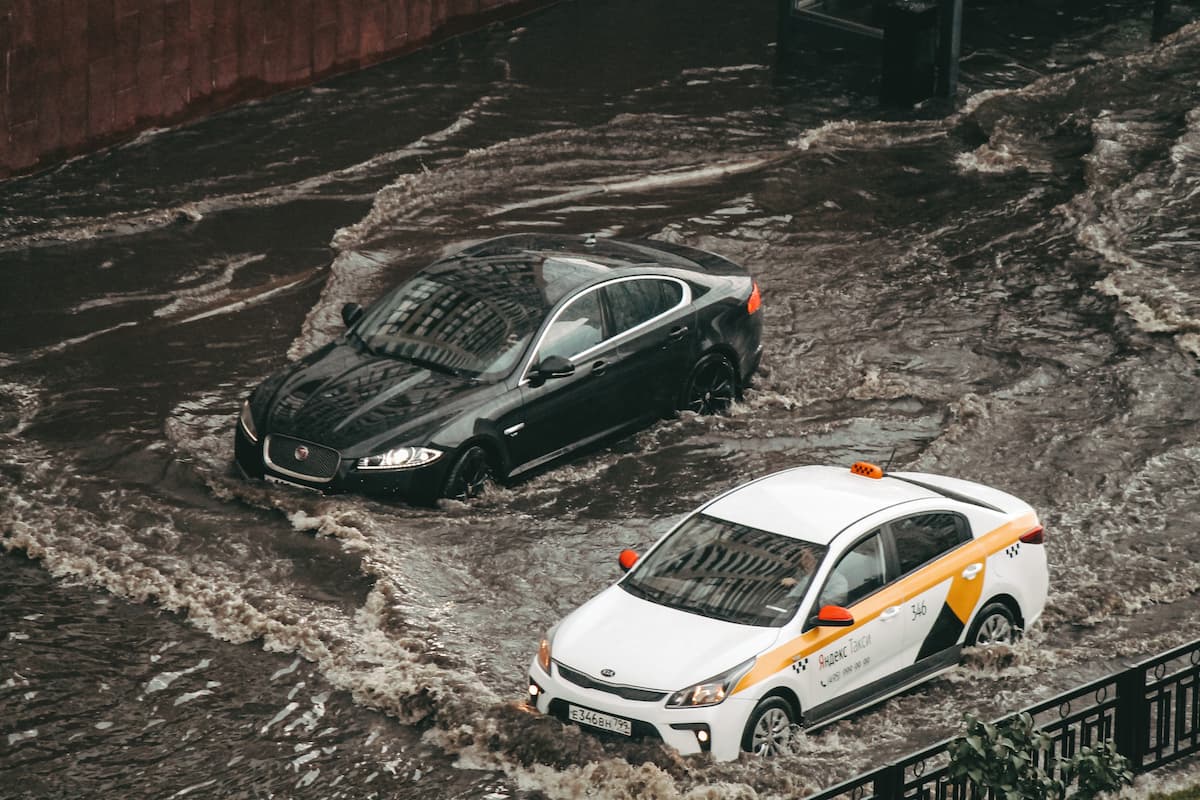
You should never drive through any water you don’t know the depth of. Generally, you will be okay with inch-deep puddles, though you will want to slow down to keep control of the car.
Even an inch of water can cause you to swerve if moving fast enough. Six inches of water is enough for you to lose control of your vehicle.
Hydroplaning can occur when vehicles go at any speed in water deeper than 1/10 in (2.5 mm).
Tire wear, width, and speed also factor into how well you can control your vehicle in water.
Two feet of water is usually enough for a 3,000 lbs (1360 kg) vehicle to float – that’s the weight of an average sedan.
While cars do sink, your tires act as flotation devices, and they may only partially submerge if the inside doesn’t fill up quickly.
Your vehicle’s height may also affect how easily your engine can be flooded. Water reaching the door frame can flood the engine bay and intake system.
Lifted vehicles have more clearance and can go through slightly deeper water than low cars.
Conclusion
After driving through water, your vehicle may not start.
Often this is because of wet sparks plugs, an electrical short in the ignition system, or the engine has locked because of water inside.
You can investigate and try to dry it out, but your best bet is to call a mechanic.

